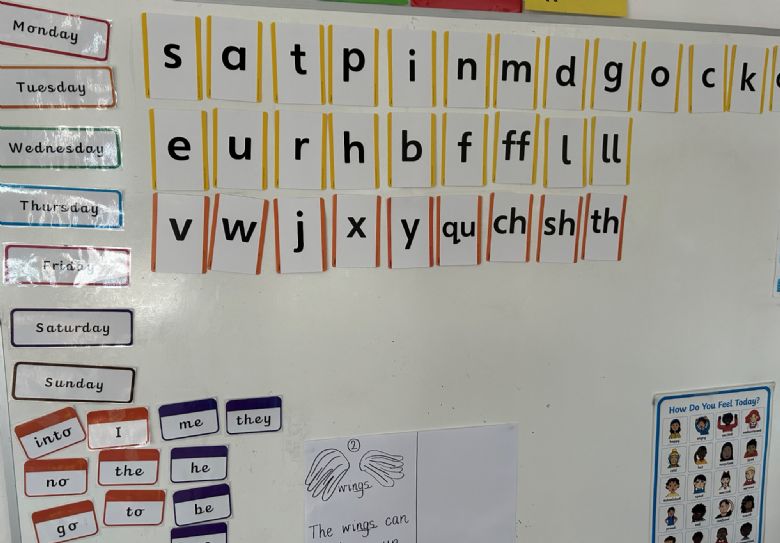PHONICS
At Woodlands Primary School, we believe that the ability to read is fundamental in enabling our pupils to become independent learners. Reading underpins everything from our ability to understand, interpret and communicate not only with each other but also the world around us. As a result of this, it is vital to recognise the importance of this area of the curriculum and to create a firm foundation by establishing a consistent and whole school approach to our phonics teaching. We have created a fast paced and rigorous approach to Phonics teaching in order to ensure its effectiveness across Early Years and Key Stage 1. We also continue to support Phonics with both whole class instruction to support their progression in spelling and interventions in Key Stage 2 where pupils may require additional support in reaching their goals.
At Woodlands we use a systematic approach to teaching phonics. It is proven that systematic phonics instruction makes a big contribution to children’s growth in reading and reduces the risk of children falling behind. This in turn has a positive impact on their ability to write. Our approach ensures a steady progression where the children are provided with regular opportunities to use and apply their phonic knowledge through a variety of lessons, games and activities. Thus creating independent readers and writers.
Aims
Our aims are for all children at Woodlands Primary School to:
-
Be provided with high-quality systematic phonic lessons.
-
Learn grapheme phoneme correspondence.
-
Be able to confidently say the sounds and blend them together to support reading.
-
Have an easily accessible bank of high frequency words which they can recognise by sight.
-
Understand and use the technical vocabulary related to phonics (digraphs/trigraphs).
-
Have their progress tracked regularly through effective assessment, to enable teachers to provide on the spot interventions. This will address and close any gaps in order to keep moving forward with whole class phonics.
-
Have a rich and varied environment which they can access to support their phonic knowledge and application (Large phonics posters easily visible in every classroom with sound mats to support on tables.
-
Have access to phonetically decodable books through Phases 1 to 5, alongside ‘branching out’ books that develop their sight vocabulary and support other strategies for reading.
-
Be exposed to phonics regularly in their learning environment to ensure a solid knowledge of letters and sounds.
Action and Implementation
-
In Nursery, children will sing the alphabet song as part of their daily routine with Phase 1 phonics being provided throughout their daily activities. From Term 3, children will begin to be exposed to phase 2 sounds through a ‘sound of the week’ approach and not through explicit phonic lessons. There will be opportunity from term 6 for small group phonics if/when appropriate.
-
In Reception, children will be taught phonics using the ‘Bug Club’ lesson plans. The sounds they learn will be supported visually by the use of makaton. Children will aim to be secure in Phase 2 with a very good knowledge of Phase 3 & 4 by the end of the year.
-
In Year 1, children will begin by revisiting Phase 4 before progressing onto Phase 5 until they are secure.
-
In Year 2, children will continue to have daily phonics lessons for those who still require Phases 3 & 5. Phase 6 will be taught through English planning daily. Those who were not secure at phase 5 at the end of year 1 or who did not pass the phonics screening check, will receive additional phonics intervention sessions in order to close gaps.
-
From Year 2 to Year 6, children will revisit and expand on their phonic knowledge through both direct instruction and the teaching of GPS (grammar, punctuation and spelling).

We have chosen Bug Club as our Phonics Programme.
https://www.pearson.com/uk/learners/primary-parents/literacy-and-phonics.html
